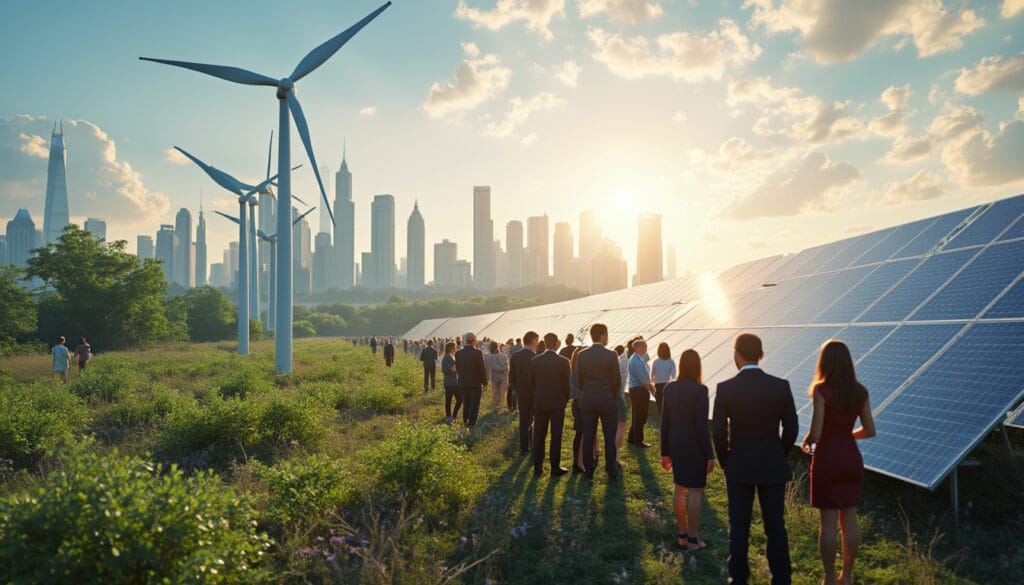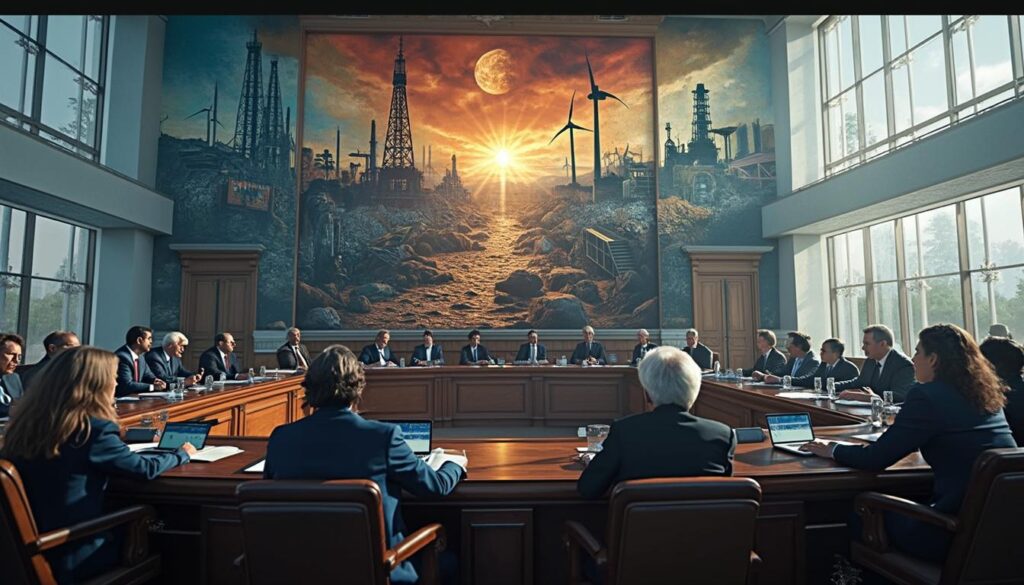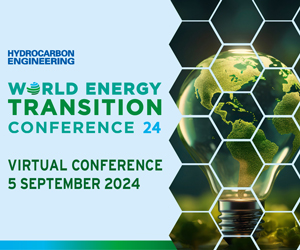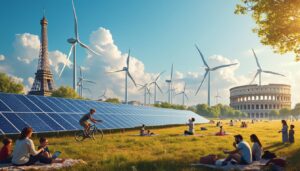Every organic waste holds the potential to become an inexhaustible energy source.
Through methanization, we transform waste into sustainable bioenergies.
This innovative approach revolutionizes waste management.
To ensure the proper functioning of our systems, please enable JavaScript and disable any ad blockers. Optimizing the technologies used is essential to maximize the valorization of biomasses. By adopting environmentally friendly methods, we contribute to a cleaner energy future. Each methanization project represents a step forward towards renewable energies and a significant reduction in our ecological footprint.

Clean energy investors explore new opportunities beyond American borders
While the United States remains a hub for investments in renewable energy, an increasing number of investors are turning to international markets to diversify their portfolios and seize new opportunities. This expansion beyond American borders is driven by several key factors, including the rapid growth of emerging economies, attractive government incentives, and the need to combat climate change on a global scale.
Why are investors turning to international clean energy markets?
Investors in clean energy are constantly seeking favorable environments to maximize their returns while contributing to the global energy transition. International markets often offer higher returns due to lower labor costs, abundant natural resources, and incentivizing government policies. For example, some developing countries have vast sunny or windy areas, ideal for the installation of solar or wind power plants, respectively.
Moreover, diversifying investments globally helps reduce risks associated with relying on a single market. Economic fluctuations, political changes, or natural disasters can impact a specific market, but by spreading investments across multiple regions, investors can mitigate these risks. This strategy is particularly relevant in the renewable energy sector, where long-term projects require financial and political stability.
Finally, the growing awareness of environmental issues is driving many investors to seek opportunities that not only offer good financial returns, but also have a positive impact on the planet. International projects often meet both criteria by supporting sustainable development in regions that need it most.
What are the promising regions for renewable energy investments?
Several regions of the world are emerging as key players in the field of renewable energy. Southeast Asia, for example, is experiencing rapid growth in its energy infrastructure, with countries like Indonesia and the Philippines massively investing in solar and wind energy. These nations benefit from abundant natural resources and expanding energy markets, thus offering lucrative opportunities for investors.
In Africa, countries like Morocco and South Africa stand out for their ambitious clean energy initiatives. Morocco, with its Noor solar complex project, is at the forefront of solar technologies and attracts numerous foreign investments. Similarly, South Africa is developing its wind and solar parks to meet the growing energy demand while reducing its reliance on fossil fuels.
Latin America, particularly Brazil and Chile, is also fertile ground for investments in renewable energy. These countries have vast resources of hydro, solar, and wind energy, and benefit from favorable government policies that encourage foreign investment. For instance, Chile is known for its innovative solar projects in the Atacama Desert, one of the sunniest places in the world.
To learn more about trends in the international clean energy market, check out this article on a spatial overview of clean energies.
Which clean energy sectors attract the most foreign investments?
The sectors of renewable energy that attract the most international investments include solar energy, wind energy, biomass, and hydropower. Each of these sectors presents unique advantages in terms of available natural resources, production costs, and growth potential.
Solar energy remains at the forefront due to the constant decrease in photovoltaic panel costs and the increase in energy efficiency. Large-scale solar projects, as well as residential and commercial installations, continue to attract substantial investments. Additionally, innovations such as floating solar panels and energy storage systems enhance the long-term viability of these projects.
Wind energy, both onshore and offshore, also represents a significant share of international investments. Offshore wind farms, in particular, are gaining popularity due to their ability to generate large amounts of electricity while minimizing visual and environmental impact. Countries like the UK and the Netherlands are investing heavily in offshore wind, creating opportunities for foreign investors.
Biomass and hydropower complete the landscape of investments in clean energy. Biomass, which uses organic materials to produce energy, offers a sustainable solution for waste management and energy production. Hydropower, harnessing the strength of currents and dams, remains a stable and reliable source of energy, although its expansion is limited by geographical and environmental constraints.
Continue reading about the investment dynamics in renewable energies with this article on wind and solar energy surpassing electricity production from coal in the United States.
What challenges do clean energy investors face outside the United States?
Investing in international renewable energy markets presents numerous benefits, but also involves specific challenges. One of the main obstacles is the complexity of local regulations and legal frameworks. Each country has its own energy policies, environmental regulations, and licensing requirements, which can complicate the investment process and lengthen project implementation timelines.
The political and economic stability of targeted countries is also a major concern. Investors must assess risks related to governmental changes, currency fluctuations, and economic uncertainties that can affect project profitability. For example, energy policies can change rapidly in response to economic or political crises, negatively impacting ongoing investments.
Moreover, access to financing can be a challenge, especially in developing countries where local financial institutions may be less robust or less available. Investors often have to rely on partnerships with international financial institutions or innovative financing mechanisms to secure the necessary funds.
Existing infrastructure also plays a crucial role. In some regions, a lack of adequate energy transport and distribution infrastructure can limit the viability of renewable energy projects. Investors must therefore consider the additional costs required to develop or improve local infrastructure.
To understand the specific challenges on the ground, check out the shocking revelations on the cessation of renewable energies in Alberta.
How do international policies influence clean energy investments?
International policies play a crucial role in the direction and scope of investments in renewable energy. International agreements, such as the Paris Agreement on climate, establish frameworks that encourage countries to adopt cleaner energy sources and reduce their greenhouse gas emissions. These commitments prompt governments to implement tax incentives, subsidies, and favorable regulations for clean energy investors.
National support policies are also critical. Countries like Denmark and Germany have implemented advantageous feed-in tariffs for solar and wind energy, making these investments more attractive. Additionally, power purchase agreements (PPAs) allow investors to secure long-term contracts with energy suppliers, providing essential financial stability for large-scale projects.
Furthermore, regional initiatives, such as energy free trade zones or cross-border cooperation agreements, facilitate investments by lowering trade barriers and harmonizing regulations. For example, the European Union has established common directives on renewable energies, which simplify cross-border investments within member countries.
However, geopolitical tensions and protectionist policies can negatively impact international investments. Trade barriers, economic sanctions, or restrictions on green technologies can create an uncertain environment for investors, sometimes prompting them to reconsider their strategies.
To explore how American policies affect the international market, read this on the sale of renewable energy securities under the influence of Trump’s policies.
Case studies: Successes of clean energy investments outside the United States
To illustrate the opportunities and successes of renewable energy investments internationally, several remarkable case studies deserve mention. These examples demonstrate how well-planned projects supported by appropriate policies can generate significant returns while having a positive impact on the environment.
One notable example is the Noor solar complex in Morocco, one of the largest solar projects in the world. Supported by public-private partnerships and international funding, this project has not only provided substantial amounts of clean energy to the country but has also stimulated the local economy by creating jobs and enhancing national technical capacities.
Another successful case is the Hornsea offshore wind farm in the UK. As the largest offshore wind farm in the world, Hornsea has attracted massive investments thanks to favorable government policies and the growing demand for renewable energy. This project has demonstrated the economic viability of offshore wind farms and laid the groundwork for future developments in this sector.
In Latin America, the El Romero solar project in Chile is an excellent example of innovation and international collaboration. This solar park, one of the most advanced in the world, integrates cutting-edge technologies to maximize energy efficiency and reduce costs. Through partnerships with technology companies and international financial institutions, El Romero has been able to overcome logistical and technical challenges to become a model of success.
These case studies show that, despite challenges, clean energy investments internationally can lead to significant successes when supported by favorable government policies, strategic planning, and effective international collaboration.
For a broader overview of global clean energy initiatives, check out this report on renewable energy projects in the United States.
Articles similaires
Thank you!
We will contact you soon.














